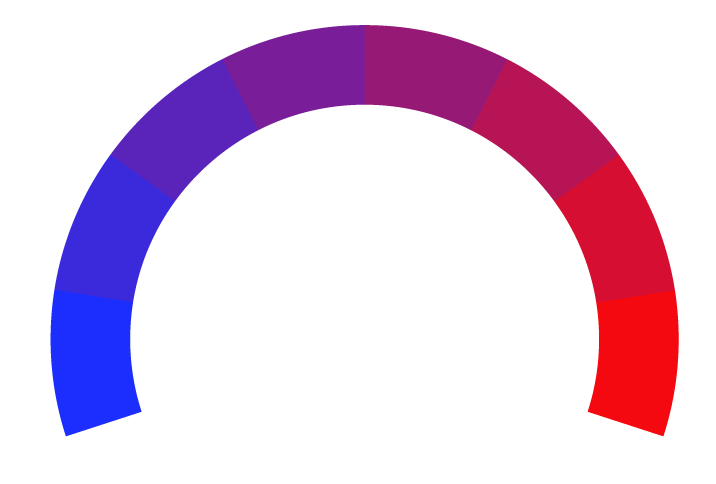What we don't understand about affirmative action
- Bias Rating
- Reliability
N/AN/A
- Policy Leaning
-48% Medium Left
- Politician Portrayal
-63% Negative
Continue For Free
Create your free account to see the in-depth bias analytics and more.
By creating an account, you agree to our Terms and Privacy Policy, and subscribe to email updates.
Bias Score Analysis
The A.I. bias rating includes policy and politician portrayal leanings based on the author’s tone found in the article using machine learning. Bias scores are on a scale of -100% to 100% with higher negative scores being more liberal and higher positive scores being more conservative, and 0% being neutral.
Sentiments
N/A
- Liberal
| Sentence | Sentiment | Bias |
|---|---|---|
Unlock this feature by upgrading to the Pro plan. | ||
Reliability Score Analysis
Policy Leaning Analysis
Politician Portrayal Analysis
Bias Meter
Extremely
Liberal
Very
Liberal
Moderately
Liberal
Somewhat Liberal
Center
Somewhat Conservative
Moderately
Conservative
Very
Conservative
Extremely
Conservative
-100%
Liberal
100%
Conservative

Contributing sentiments towards policy:
65% : Bakke marked the end of this period of experimentation with affirmative action, once the court ruled that colleges and universities could only use affirmative action to achieve the goal of diversifying their campuses.61% : Others have also noted how legacy admissions are their own form of affirmative action.
60% : When an organization sets a goal to hire or promote more women or makes an effort to recruit veterans, this is also considered affirmative action.
60% : Powell's opinion in Bakke ruled out the possibility that affirmative action may exist solely because it benefits people of color.
60% : Harvard, which is often credited with creating a leading model of affirmative action, uses "tips" or plus factors that might tip an applicant into Harvard's group of admitted students.
59% : In the educational context, affirmative action began percolating among activists during the civil rights movement, and sociologists Anthony S. Chen and Lisa M. Stulberg say it became a part of higher education in two key phases.
59% : Moreover, while Blum and his legal team claim that they are acting in the interest of Asian students, polls show that the majority of Asian people support affirmative action.
58% : Companies that take steps to review hiring policies to better accommodate underrepresented groups or develop training programs to support them are said to engage in affirmative action, too.
57% : Campuses, however, continue to struggle to foster diversity, and advocates say affirmative action is still necessary even as America rapidly diversifies.
57% : And what could happen if the Supreme Court ends affirmative action?
57% : That same year, President Lyndon B. Johnson delivered the commencement address at Howard University and made the case for the compensatory rationale behind affirmative action: You do not wipe away the scars of centuries by saying: Now you are free to go where you want, and do as you desire, and choose the leaders you please.
57% : Despite the historic media focus on Black Americans as the only group of people to benefit from affirmative action in admissions, the programs have supported a broad range of communities, including Native Americans, Arab Americans, Latinos, Asian Americans, and Black Americans.
57% : A New York Times analysis found that even with affirmative action, Black students were just 6 percent of first-year students at selective elite schools in 2015, though they made up 15 percent of college-age Americans.
57% : Researchers have also studied whether affirmative action based on socioeconomic status would be a feasible way to achieve racial diversity since Black, Latino, and American Indian families have historically earned less than white and Asian families.
56% : Affirmative action refers to the programs and policies in which certain facets of identity -- such as race, ethnicity, gender, disability status, even veteran status -- are considered in the distribution of resources or opportunities.
56% : For the broader student body, particularly white students of higher socioeconomic status, affirmative action has been proven to foster positive racial attitudes toward marginalized groups, help them develop stronger leadership skills, and make them likelier to engage civically after they graduate.
55% : The statement has cast a shadow over the future of affirmative action.
54% : The history of affirmative action starts not in the university system, but in labor policy.
53% : Affirmative action has been used for more than half a century by colleges and universities, initially to encourage the participation of historically marginalized groups and mitigate the effects of decades of segregation by university systems.
53% : We're a natural fit for anyone who wants to question the legitimacy of affirmative action by arguing that it doesn't just harm whites but also harms deserving minorities, too."
52% : Nevertheless, Powell did accept a different moral justification for affirmative action -- the argument that diverse campuses benefit society as a whole.
52% : The second wave of affirmative action, which began in 1965 and ended with the Bakke decision in 1978, was marked by national unrest, with college campuses at the center of agitation.
51% : Data shows that affirmative action has helped reduce severe intra-racial disparities among Asian American people.
49% : Since Bakke, the court has upheld affirmative action in admissions despite multiple challenges, including Fisher v. University of Texas, decided as recently as 2016, in which Abigail N. Fisher, a white woman, claimed that she was rejected from the University of Texas at Austin because of preferences given to applicants of color.
49% : Between 1967 and 2009, female college enrollment more than doubled, with the percentage of white women ages 25 to 35 with a college degree growing from less than 15 percent to more than 40 percent, though it is unclear how much of these gains can be attributed to affirmative action.
49% : (When it came to employment, Crenshaw wasn't wrong: Early reports found that affirmative action sometimes led to an overrepresentation of white women in managerial roles.)
48% : Media depictions -- like the 2003 Newsweek cover story titled "Do We Still Need Affirmative Action?
48% : The seminal book The Shape of the River by the late William G. Bowen, a former Princeton president, and former Harvard president Derek Bok examined the impact of affirmative action during its first three decades on students who probably benefited, and found that the students had better life outcomes -- they were more likely to graduate from college, earn professional degrees, and have higher incomes -- than peers who went to less competitive colleges and probably didn't benefit from affirmative action.
48% : "The point of affirmative action in higher education is not to stop discrimination on the basis of race.
46% : In that context, affirmative action was used as a term to compel employers who had engaged in unfair labor practices to compensate victims.
45% : Historically proponents of affirmative action made two arguments for why it should exist.
45% : Because the Court has historically been ambivalent about affirmative action, it has placed several significant restrictions on affirmative action programs.
44% : Research has shown that the alternatives to affirmative action are limited and far less effective than race-conscious policies at fostering diversity.
42% : Still, affirmative action has not produced great results for underrepresented students after more than 40 years in effect.
41% : Affirmative action proponents argue that the programs encourage diversity and continued integration and since certain groups are still grossly underrepresented -- Black and Latino students are more underrepresented at selective universities today than 35 years ago -- affirmative action is still necessary.
40% : Since the early 1990s, Blum has filed more than two dozen lawsuits against affirmative action practices and voting rights legislation.
38% : This is simply a gross distortion of reality, especially given that the primary beneficiaries of affirmative action have been Euro-American women."
36% : Critics have painted affirmative action as a Black issue because that strategy allows them to use negative racial stereotypes to argue that the programs serve an under-qualified or undeserving group of people.
35% : Out of nine justices, six are now conservative, and with Chief Justice John Roberts's acknowledgment of his preference for race-neutral admissions policies, a sweeping ban on affirmative action may be on the horizon.
31% : For example, California banned affirmative action in 1998, and by 2017, the percentage of Black students at the University of California Berkeley was only 3 percent, down markedly from 6 percent in 1980.
12% : More recently, conservatives including President Ronald Reagan have made similar attacks on affirmative action -- often describing such programs as "reverse discrimination."
*Our bias meter rating uses data science including sentiment analysis, machine learning and our proprietary algorithm for determining biases in news articles. Bias scores are on a scale of -100% to 100% with higher negative scores being more liberal and higher positive scores being more conservative, and 0% being neutral. The rating is an independent analysis and is not affiliated nor sponsored by the news source or any other organization.






















 Vox
Vox